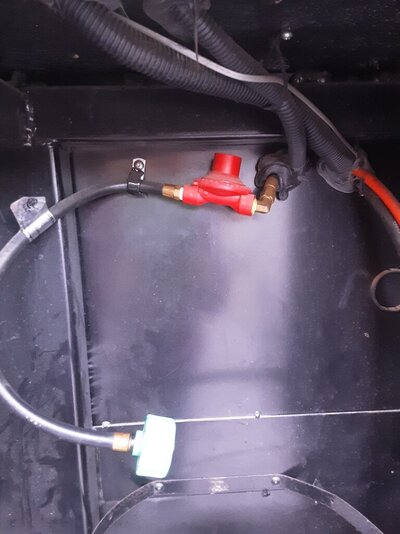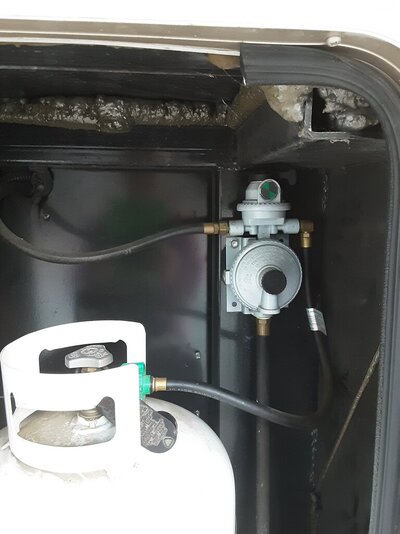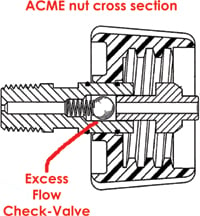Gary...What bothers me when I see someone here post, or I read in articles online, in magazines and even in some trailer manuals, that you should always open your propane cylinder valves "very, very slowly" Is the fact that doing that can be dangerous or at lest cause some problems. I have demonstrated this by intentionally leaving a stove burner valve open with the cylinder valves closed. Then I opened a cylinder valve very, very slowly. That slow opening of the cylinder valve prevented a rush gas into the zero pressure system. With no rush of gas the excessive flow check valve was "fooled" and did not activate. That meant there was no designed pressure check (the 10% flow) and 100% gas flow was available to the leak (open stove burner valve in this case).
I showed a friend how he could catch leaks in the propane system quickly by using my little test. If you open your cylinder valve into a system that leaks you are going to still get a green flag on the regulator. However, if after you open the valve and get the green flag you then close that valve....If after a short time, maybe 30 seconds or less the flag turns red then the system pressure didn't hold and there is a leak somewhere in the system. If the flag remains green, say for a couple of minutes or so, then the system is holding pressure. On my knew trailer that I just brought home I did this test and left it overnight. I had opened the cylinder valve, got the green flag and closed the valve. The flag was still green the next morning. No leaks in that system.
If people would learn more about their systems and how they work they would have a much more trouble free time and much easier time identifying and/or troubleshooting problems. Another little test that I use to insure that my water system doesn't have hidden leaks is a s follows:
I also do another test on my freshwater system. With water in my freshwater tank and the water pump ON...I open a faucet until the pump runs. Then I close the faucet and when the pump stops I turn the pump electrical switch off isolating the pressure in the system. I leave that for a number of hours or even overnight. Then I turn the pump switch back on...if the pump runs even a little then the system didn't hold pressure and you have a leak somewhere or a leak-back through the pump-head check valve back to the tank. You have to leave it with the pump off for some hours, longer if you have an accumulator in the system. Even if you don't have an accumulator if you have a tank water heater the designed air gap at the top of the tank can act as a pressure accumulator. I do this test a few days before trips as well as the above propane leak check. Those can save problems while on your trip. Propanee leaks can be dangerous and small undetected water leaks can destroy any RV.
Another long post....I better go away for a while......................



